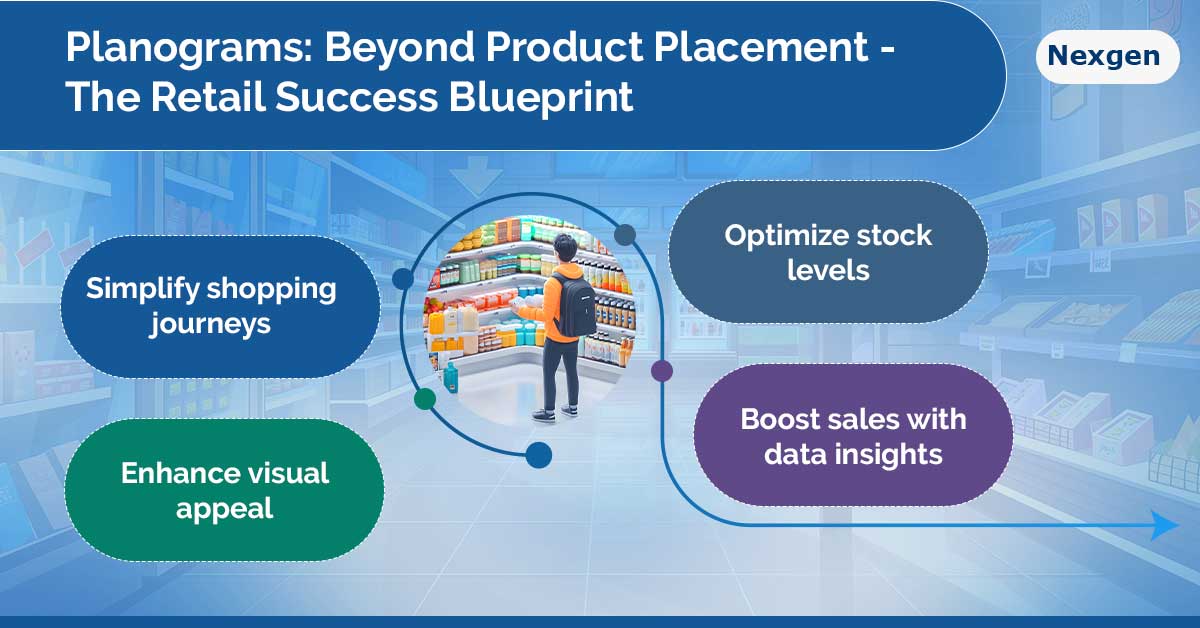When you think of planograms, the first thing that likely comes to mind is product placement - a detailed map of where each product should sit on the shelves. While this is a critical function, it’s only one piece of the puzzle. The truth is planograms go far beyond shelf organization. They are a vital tool in the broader strategy of retail success, influencing everything from store design to customer experience and operational efficiency.
The Core of Planograms: Product Placement
At their foundation, planograms are designed to optimize shelf space by:
- Strategic Positioning: Ensuring high-demand items are at eye level and complementary products are placed nearby.
- Maximizing Sales: Prioritizing shelf space for top-performing products to boost revenue.
- Creating Order: Organizing products logically to help customers find what they need quickly.
While these aspects are essential, they represent just the starting point of what planograms can achieve.
Beyond Placement: The Bigger Picture
Planogram serve as a framework for broader retail objectives, impacting multiple facets of the business. Here’s how they extend beyond basic shelf organization:

1. Enhancing Customer Experience
Planograms are a silent yet powerful force shaping the shopping journey. By carefully arranging products, they:
- Make stores easier to navigate.
- Highlight promotional or seasonal items.
- Reduce frustration by minimizing clutter and confusion.
A thoughtfully designed planogram ensures that customers spend more time shopping and less time searching.
2. Driving Inventory Management
Planograms are deeply tied to stock control and replenishment strategies. They help retailers:
- Avoid overstocking or understocking products.
- Optimize restocking processes by aligning shelf capacity with inventory data.
- Manage seasonal inventory shifts.
This alignment reduces waste and ensures products are always available when customers need them.
3. Boosting Visual Merchandising
Effective visual merchandising relies heavily on planograms. They provide a blueprint for creating:
- Attractive displays that catch the shopper’s eye.
- Thematic setups that align with campaigns or seasons.
- Consistence across multiple store locations, reinforcing brand identity.
4. Supporting Data-Driven Decisions
Modern planograms integrate analytics to inform retail strategies. They help answer critical questions such as:
- Which products should get prime shelf space?
- How should space be allocated among categories?
- What are the optimal layouts for improving sales?
By leveraging data, retailers can refine their approaches and adapt to changing consumer trends.
5. Streamlining Operations
Planograms don’t just benefit the sales floor; they also improve back-end efficiency by:
- Simplifying communication between teams (e.g., marketing and store staff).
- Ensuring smoother implementation of promotional campaigns.
- Providing clear guidelines for shelf stocking and maintenance.
Common Misconceptions About Planograms
At their foundation, planograms are designed to optimize shelf space by:
- Strategic Positioning: Ensuring high-demand items are at eye level and complementary products are placed nearby.
- Maximizing Sales: Prioritizing shelf space for top-performing products to boost revenue.
- Creating Order: Organizing products logically to help customers find what they need quickly.
The Core of Planograms: Product Placement
Some retailers view planograms as rigid tools that stifle creativity or focus solely on squeezing the most products into limited space. In reality, planograms are flexible and dynamic. When implemented correctly, they:
- Leave room for creativity in displays.
- Focus on quality over quantity, avoiding overcrowded shelves.
- Adapt to the unique needs of individual stores and customer bases.
Conclusion: Planograms as Strategic Tools
Planograms are far more than just product placement guides. They are strategic tools that enhance customer experience, optimize inventory, boost visual merchandising, and streamline operations. By looking at the bigger picture, retailers can harness the full potential of planograms to create efficient, attractive, and profitable stores.
Get Your Free Trial Today!